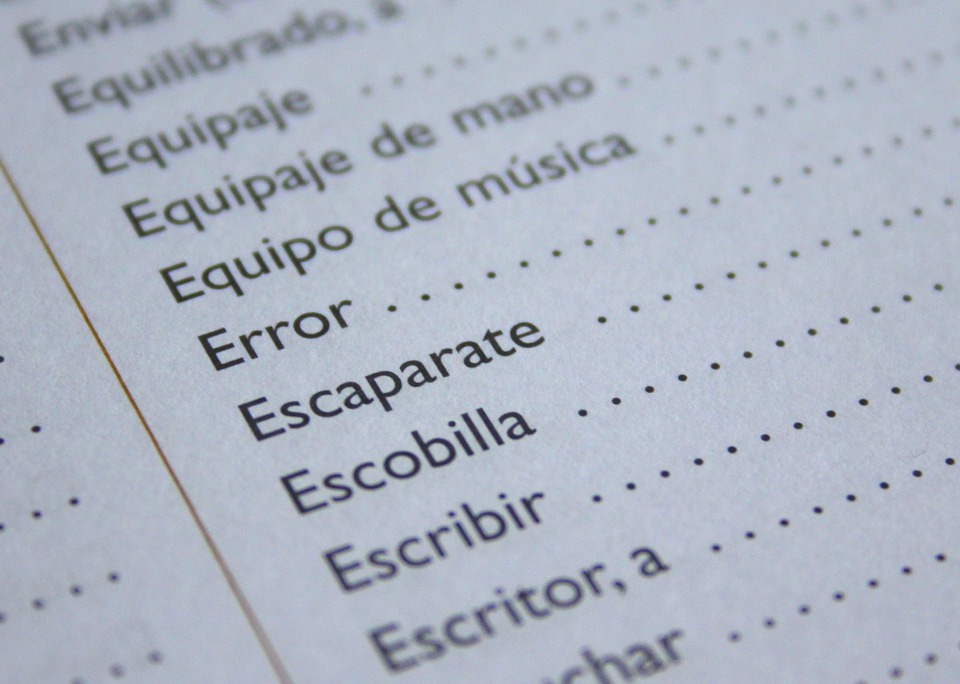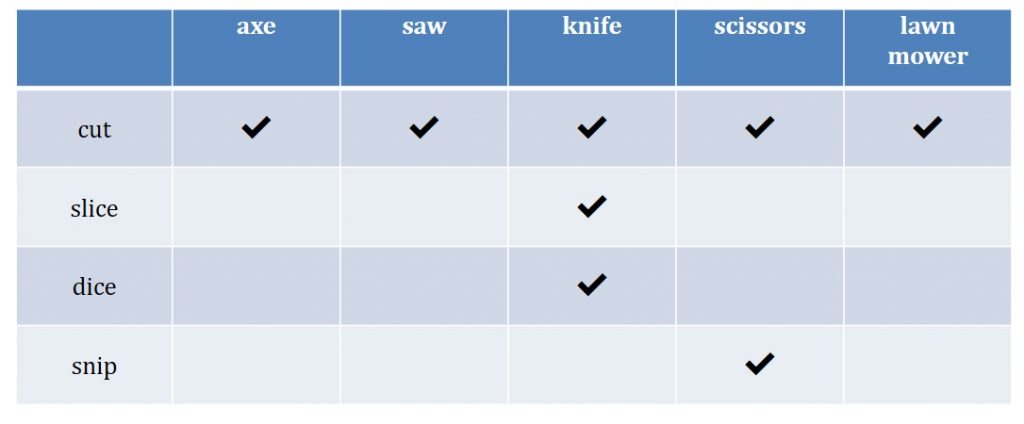How much vocabulary is enough when learning a foreign language? Posted by Transparent Language on Mar 12, 2018 in For Learners, Learning + Usage Tips
I came across an interesting question on Quora recently. The asker wondered which was more important: speaking a language correctly and properly or successfully communicating an idea at the expense of eloquence.
The consensus was in favor of communicating successfully, particularly in the beginning stages of learning a language. So, where should learners begin to achieve the goal of communicating successfully?

Vocabulary building is the key to rapid progress.
The Quora question brings to mind a well-known example from ESL teacher Keith Folse. In his book, Vocabulary Myths, Folse tells of his misadventure at a Japanese supermarket:
He wants to buy some flour, so he arrives armed with the perfect sentence structure, “Sumimasen, ____ -wa doko desu ka?” (Excuse me, where is the ____?). But there’s a problem: he doesn’t know the word for “flour”. He sees one of his Japanese students in the store and asks for the word. Unfortunately, his student replies hana (flower), not komugi (flour). After being sent to the floral section, he realizes how vital vocabulary can be for simple communication. One simple word, flour, would have led him to the product.
Learners looking to gain native-like proficiency might be tempted to dive head first into complex grammar rules. How will they ever be able to communicate with foreign colleagues without learning the hard stuff? It’s true: it’s difficult to communicate effectively without proper grammar. But without vocabulary, it’s impossible.
At lower proficiency levels, focus on building breadth of vocabulary.
While there is no magic number of words that equates to fluency, proficiency levels have consistently been shown to increase in tandem with vocabulary size.
A number of cross-linguistic studies2, 5, 8, have reported similar findings in the relationship between vocabulary size and language proficiency:

In fact, studies1,3,6 have shown that, of all the factors contributing to language proficiency, vocabulary size is by far the single most significant factor, accounting for anywhere from 50% to 70% of proficiency gains depending on the language and the skill being studied.While the actual vocabulary sizes associated with specific proficiency levels may vary by language, the data consistently show that “progressively higher vocabulary scores are associated with progressively higher levels in the CEFR hierarchy” (Milton 2010).
To maximize proficiency gains, early learners should focus on frequently used vocabulary.
When it comes to building proficiency, the question is not simply how many words, but which words.
The chart above suggests that a vocabulary of roughly 1,000+ words will get you to the A1 level. But which 1,000 words? To maximize proficiency gains, educators and learners must ask themselves which words are most useful.
Consider the verbs in the table below. A generic verb like “to cut” can be used in far more situations than a specific verb like “to snip”, which can only be used in a limited number of situations involving scissors or shears. An axe, knife, pair of scissors, and lawn mower can all cut things. But only a pair of scissors snips things, illustrating the fact that cut is a much more useful word than snip.

In the same vein, the word bird is more useful than the word cardinal. Most of what there is to know about a cardinal can be conveyed by the word bird. If needed, a more detailed description like “small, red bird” could be constructed from other basic and equally useful words.
In fact, the word bird is the common link in the dictionary definitions of cardinal, robin, sparrow and thousands of other avian species, being part of what lexicographers refer to as a language’s “defining vocabulary” – the set of basic-level, “core vocabulary” (Stubbs 1986) that is used in the dictionary definitions of thousands of more specific or complex words that make up the lexicon of any language.
As learners’ proficiency increases, they will learn more specific words like cardinal, robin, and sparrow, but if you had to choose one of these four words to learn first, bird would clearly be the most useful.
The most useful vocabulary to learn—the vocabulary that’s going to move the proficiency needle the most—are the “core” words which can be used the most frequently and in the broadest range of contexts. This all sounds nice and convincing, but you’re probably wondering how to identify the most frequently occurring words in the language(s) you’re learning. We recommend resources like frequency dictionaries or frequency word lists.
But what does it really mean to “know” a word?
To answer this question, we must consider depth in addition to breadth. Knowing a word’s primary meaning sense (the first entry in the dictionary), along with its spelling, pronunciation, and part of speech is a start, but this still barely scratches the surface of what we mean by depth.
The depth of knowledge about any given word includes and understanding multiple meaning senses, connotations, collocations, and expressions associated with that word. This is the territory of the advanced learner whose goal is to obtain native-like proficiency.
We’ll cover depth of vocabulary in more depth (see what we did there?) in an upcoming post.
Ready to build your vocabulary with us? Check out the free trial of Transparent Language Online for individuals, libraries, and schools.
Want to read more about the correlation between vocabulary size and proficiency? Here are the studies we cited:
1 Alderson, J.C. (2005). Diagnosing foreign language proficiency. London: Continuum.
2 Huhta, Ari J. et al. (2011) Diagnosing reading in L2 – predictors and vocabulary profiles, Vortrag auf der ACTFL CEFR Conference 2011, 4.-6. August 2011, Provo, Utah (USA).
3 Laufer, B. (1992). How much lexis is necessary for reading comprehension? In H. Bejoint & P. Arnaud (Eds.), Vocabulary and applied linguistics (pp. 126–132). London: Macmillan.
4 Milton, J., & Alexiou, T. (2009). Vocabulary size and the Common European Framework of Reference for Languages
5 Milton, J., & Alexiou, T. (2010). Developing a vocabulary size test for Greek as a foreign language
6 Stæhr, L. S. (2008). Vocabulary size and the skills of listening, reading and writing. Language Learning Journal, 36(2), 139-152.
7 Stubbs, Michael (1986). Language Development, Lexical Competence, and Nuclear Vocabulary
8 Tschirner, E., J. Hacking, and F. Rubio. (2017). Relating Vocabulary Size to ACTFL Reading Proficiency Levels. Conference Paper, Refereed. ACTFL Annual Convention. Nashville, TN., 2017

Build vocabulary, practice pronunciation, and more with Transparent Language Online. Available anytime, anywhere, on any device.




Comments:
Pavel Fomichev:
It’s very convincing. When starting to learn Chinese on my own without frequent contacts with Chinese speakers the second thing I did (the first one was listening to dialogues) was memorising 300 Chinese most used words, and the third thing – learning examples of their usage.
Ruth S Valle:
In my mind, I know enough words in Spanish but in German, my native language I have some gaps. There are many words I have forgotten over the course of the years since I no longer live in Germany.